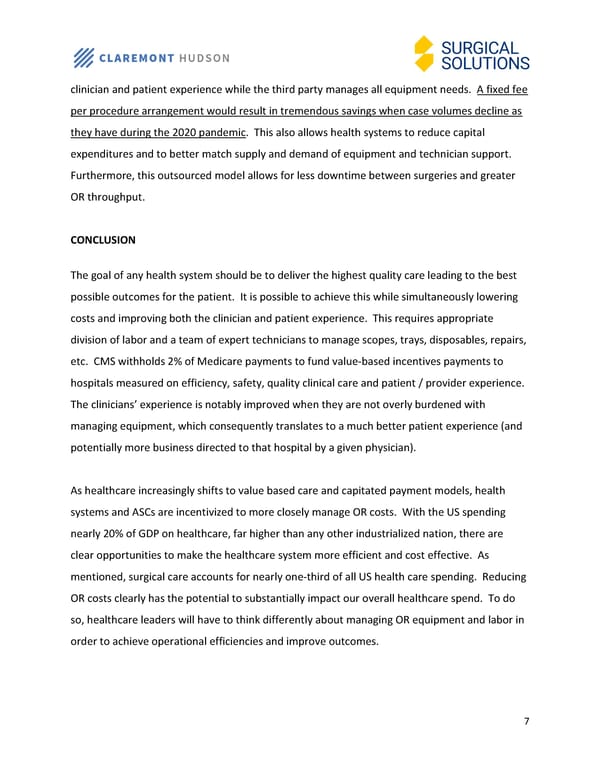clinician and patient experience while the third party manages all equipment needs. A fixed fee per procedure arrangement would result in tremendous savings when case volumes decline as they have during the 2020 pandemic. This also allows health systems to reduce capital expenditures and to better match supply and demand of equipment and technician support. Furthermore, this outsourced model allows for less downtime between surgeries and greater OR throughput. CONCLUSION The goal of any health system should be to deliver the highest quality care leading to the best possible outcomes for the patient. It is possible to achieve this while simultaneously lowering costs and improving both the clinician and patient experience. This requires appropriate division of labor and a team of expert technicians to manage scopes, trays, disposables, repairs, etc. CMS withholds 2% of Medicare payments to fund value-based incentives payments to hospitals measured on efficiency, safety, quality clinical care and patient / provider experience. The clinicians’ experience is notably improved when they are not overly burdened with managing equipment, which consequently translates to a much better patient experience (and potentially more business directed to that hospital by a given physician). As healthcare increasingly shifts to value based care and capitated payment models, health systems and ASCs are incentivized to more closely manage OR costs. With the US spending nearly 20% of GDP on healthcare, far higher than any other industrialized nation, there are clear opportunities to make the healthcare system more efficient and cost effective. As mentioned, surgical care accounts for nearly one-third of all US health care spending. Reducing OR costs clearly has the potential to substantially impact our overall healthcare spend. To do so, healthcare leaders will have to think differently about managing OR equipment and labor in order to achieve operational efficiencies and improve outcomes. 7
 Operating Room Insourcing Versus Outsourcing Page 6 Page 8
Operating Room Insourcing Versus Outsourcing Page 6 Page 8